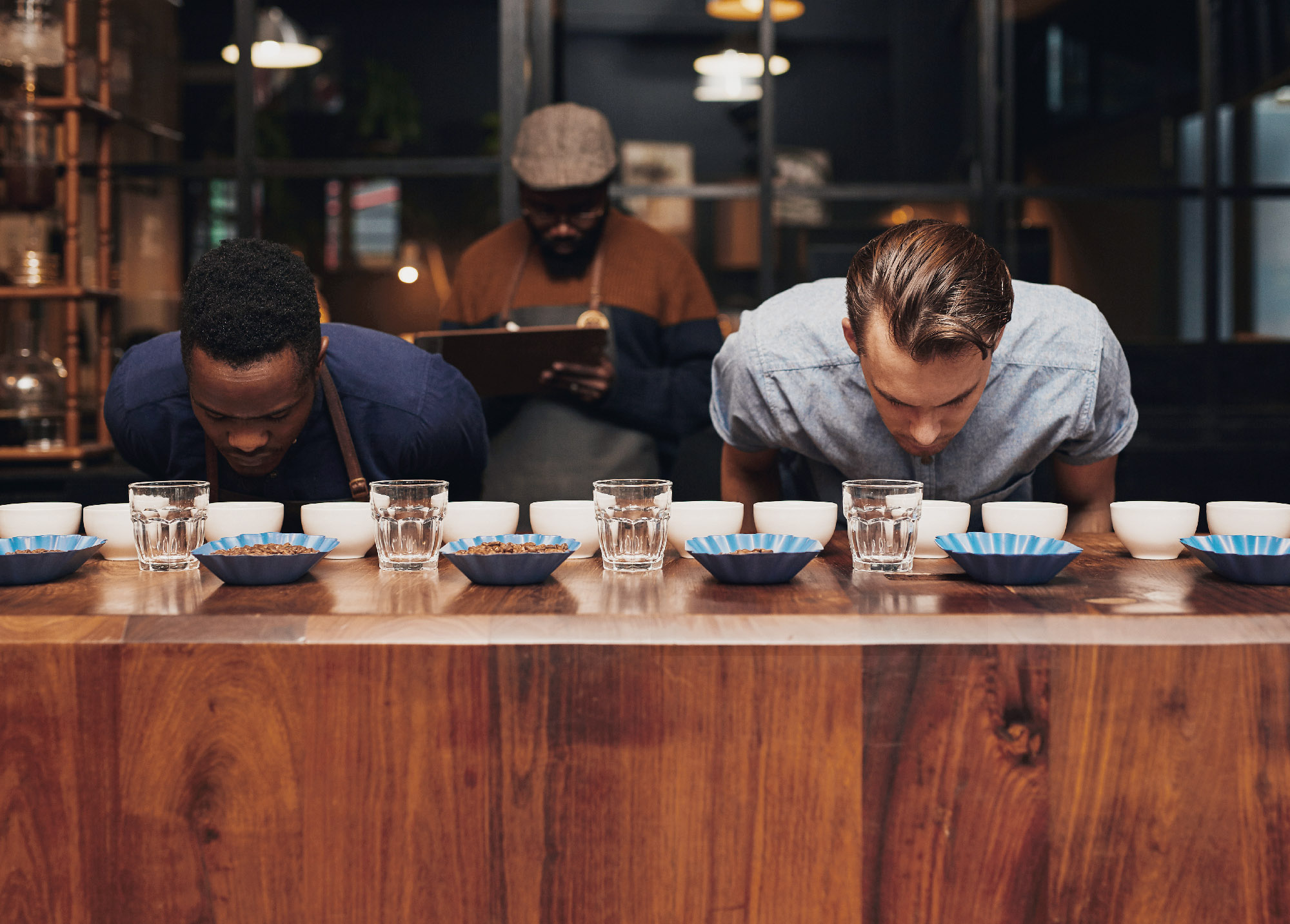Can you Improve your receptivity to tastes and smells? Danish sensory scientist Ida Steen thinks you can. As a sensory scientist, Ida explains that she deals only with objective elements in tasting — scoring intensity rather than making quality judgments — but to do this properly takes months and years of training (I. Steen, 2017). For example, the sensory panel from Texas State University who helped WCR develop the Sensory Lexicon trained for a minimum of 2000 hours in beverage analysis, 120 hours of general descriptive analysis as well 50 hours of coffee specific training leading up to building the lexicon (K. Sanchez Alan, 2015). Part of the training process for a sensory scientist involves building up an awareness of a particular set of flavour references.
In sensory science, references for both the characteristics of a food product as well as the defects that can appear are established for a particular type of food or drink that is under examination. (F. J. Perez Elortondo et al., 2006). A great example of such a collection of references used to train sensory scientists to work with coffee exists in the World Coffee Research Sensory Lexicon. This is a list of 110 commonly available food products that have been proven to constitute the fundamental flavours in coffee.
Cuppers work very differently to sensory scientists and apply subjective value judgments to a coffee, such as when they use an SCA Cupping Form to rate a coffee using a numerical score. When training cuppers to improve their receptivity to taste and flavour, “…We need to explore the gap between the objective and the subjective worlds. The objective world is way too expensive and way too time consuming. … What we want to do is a lot of objective training to give people better subjective skills.” (I. Steen, 2017)
Ida explains that the cost-intensive process of learning to operate objectively,
